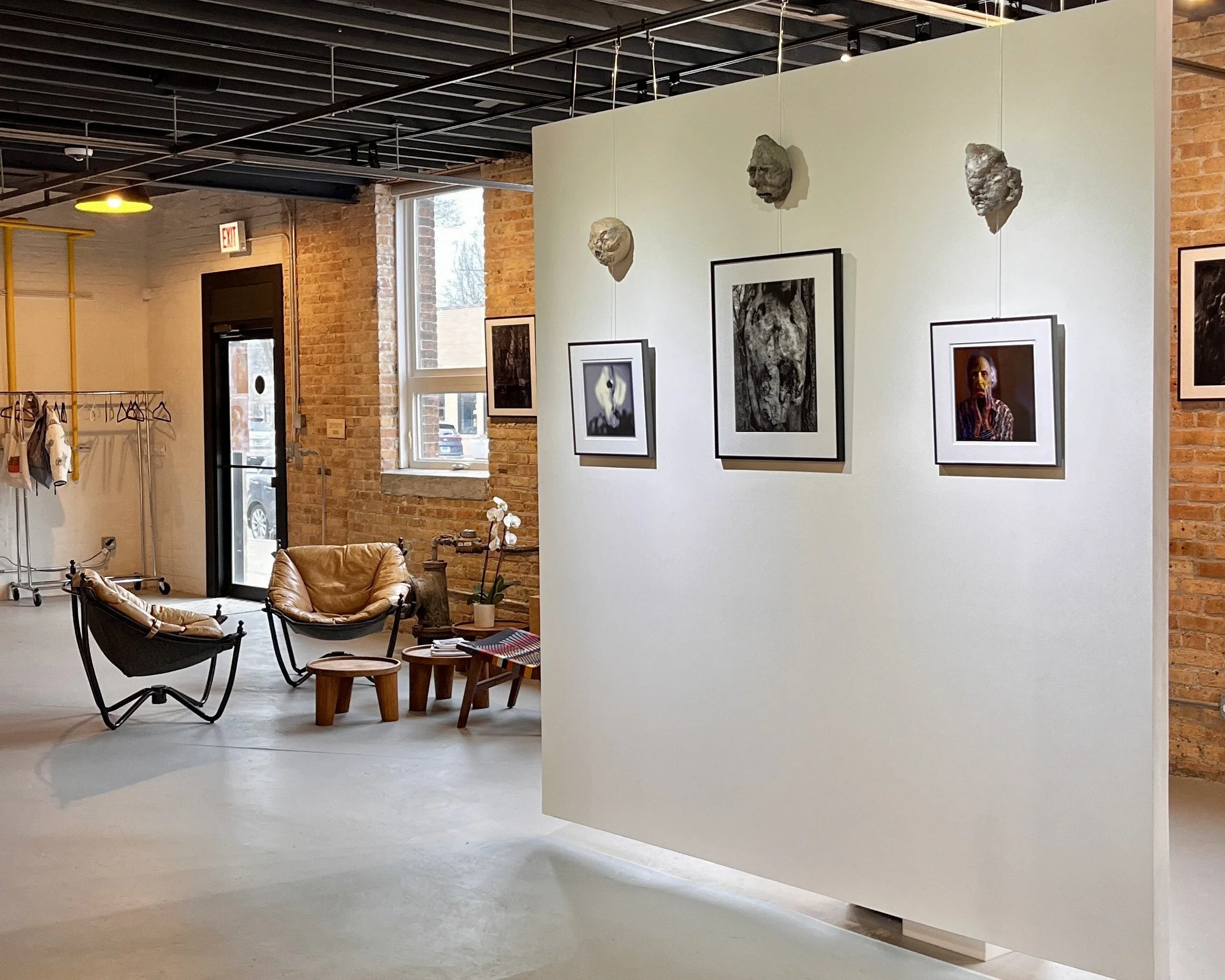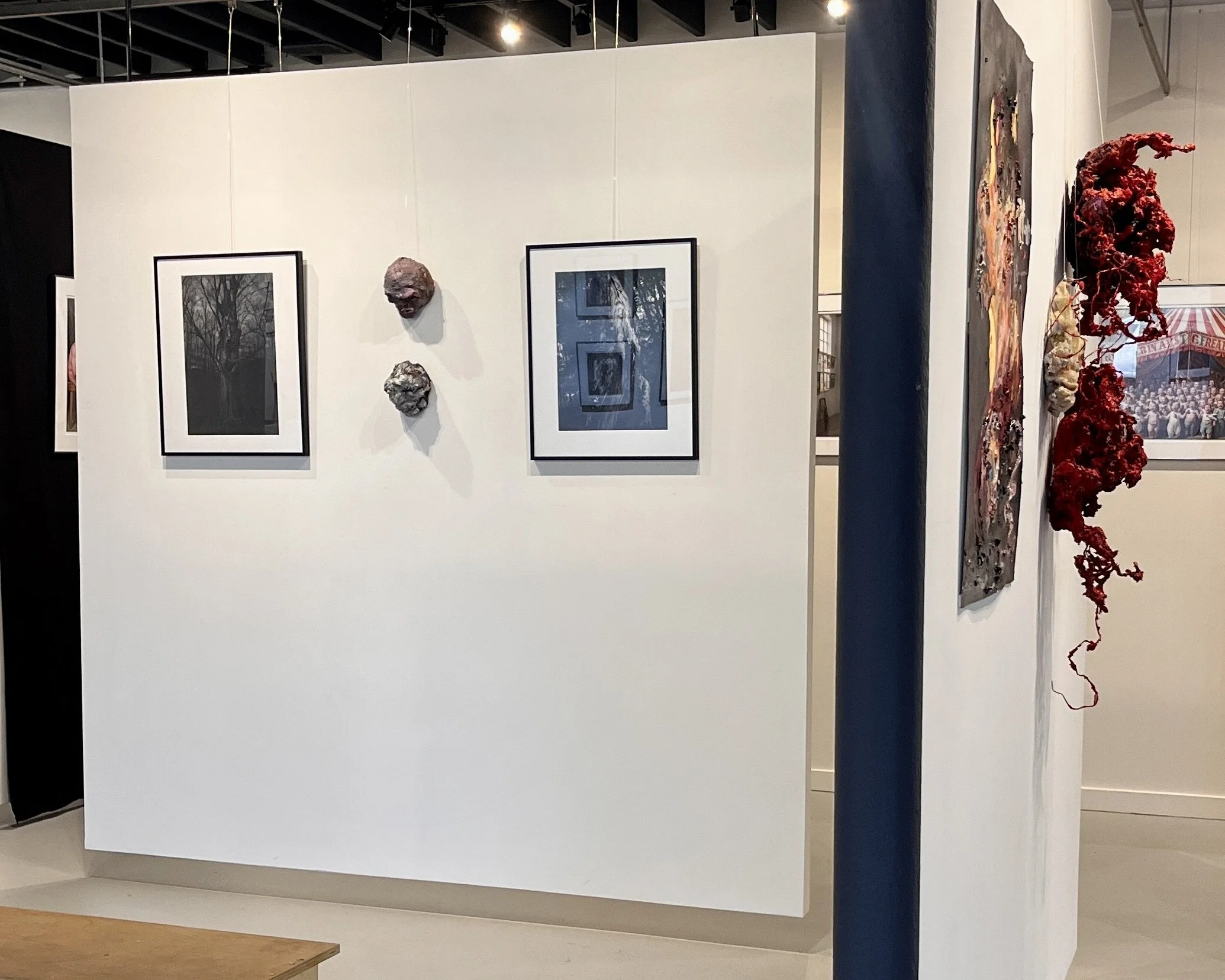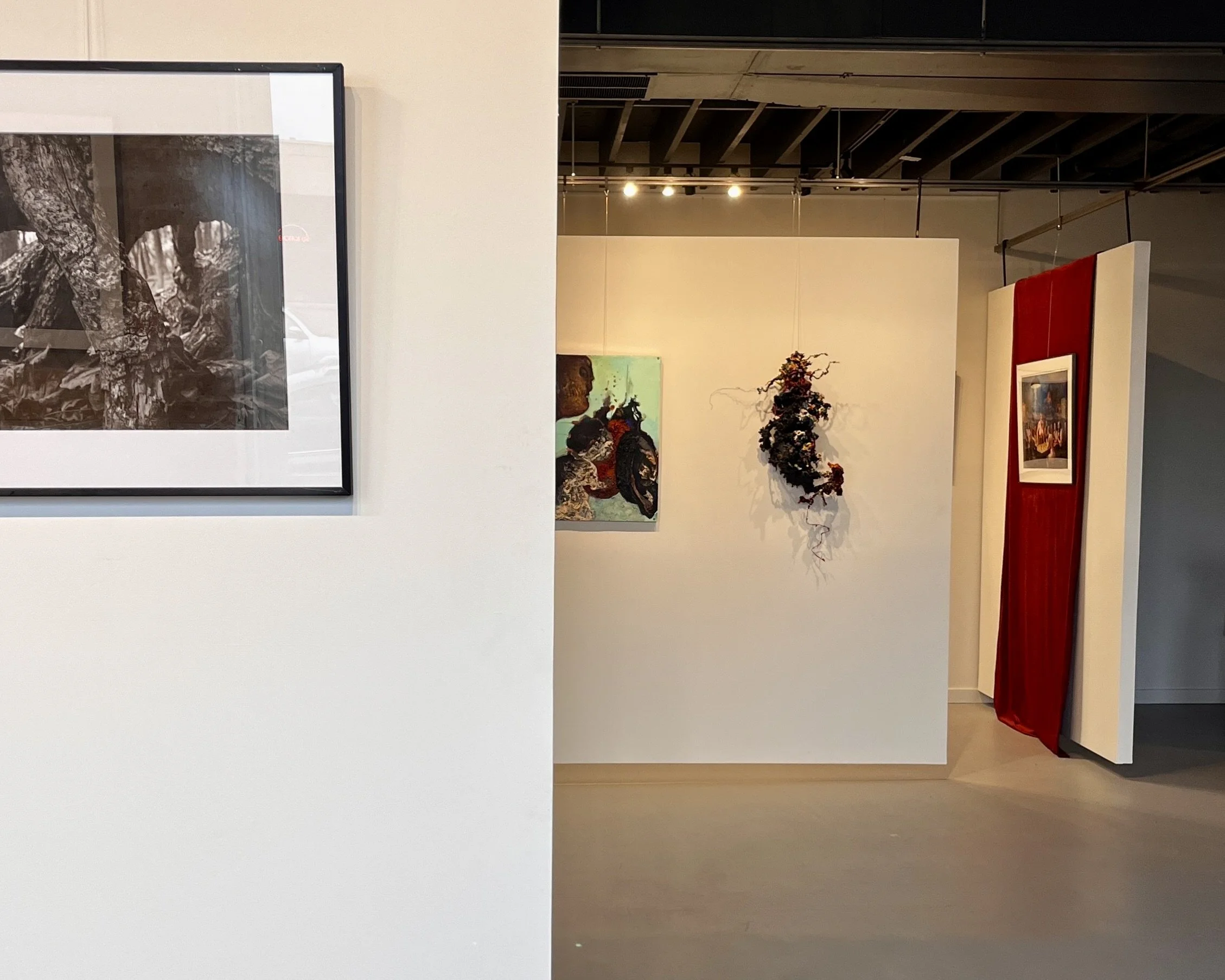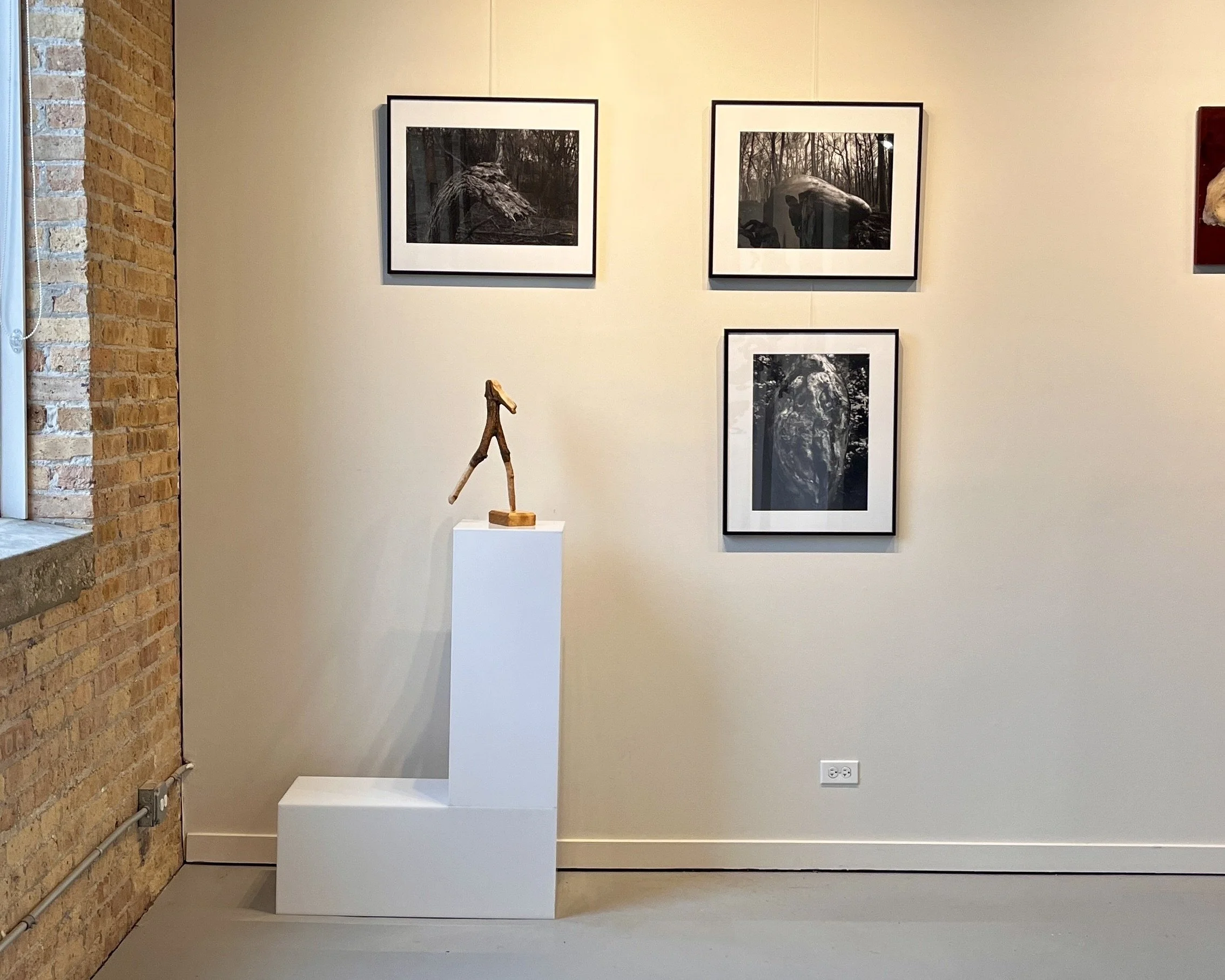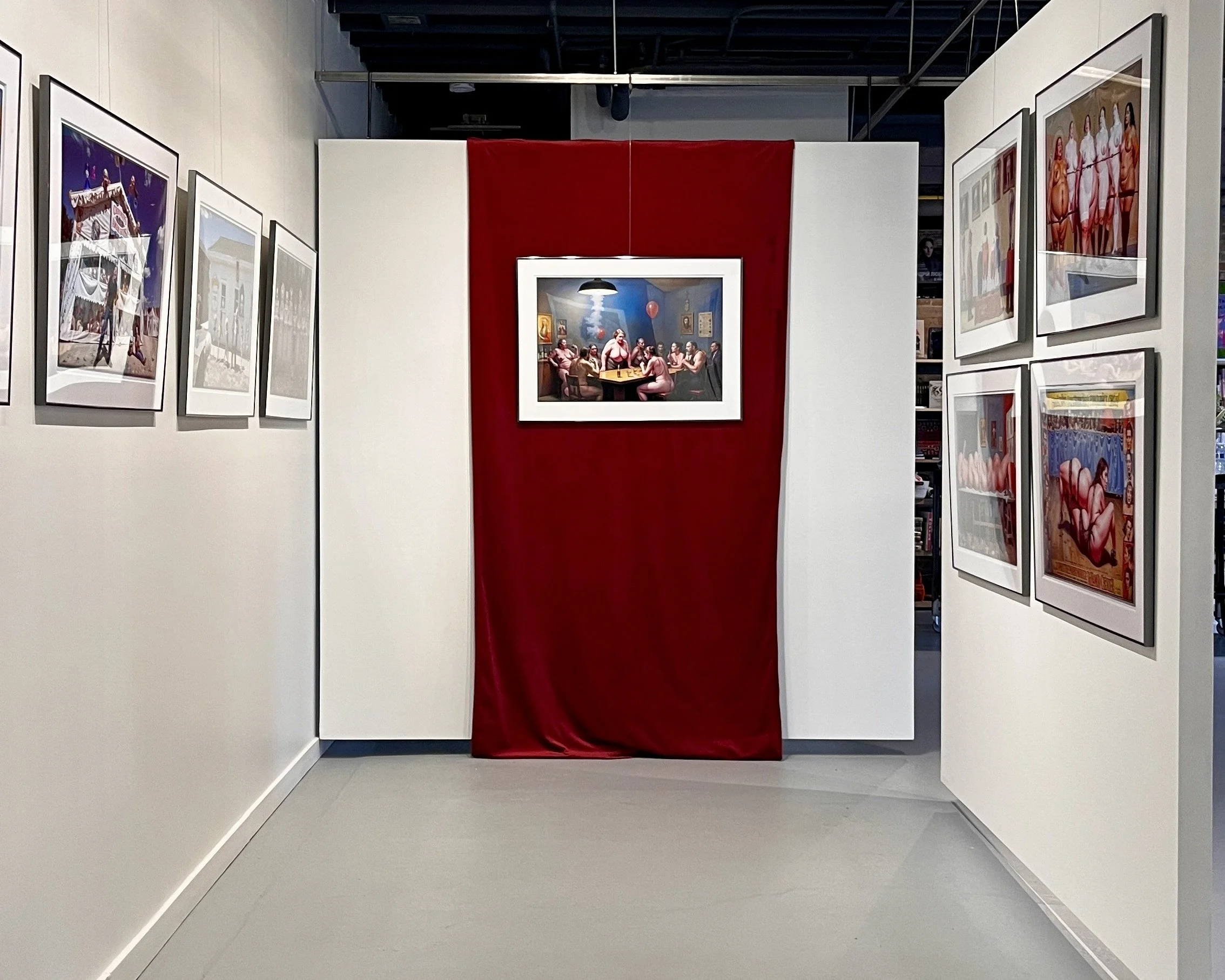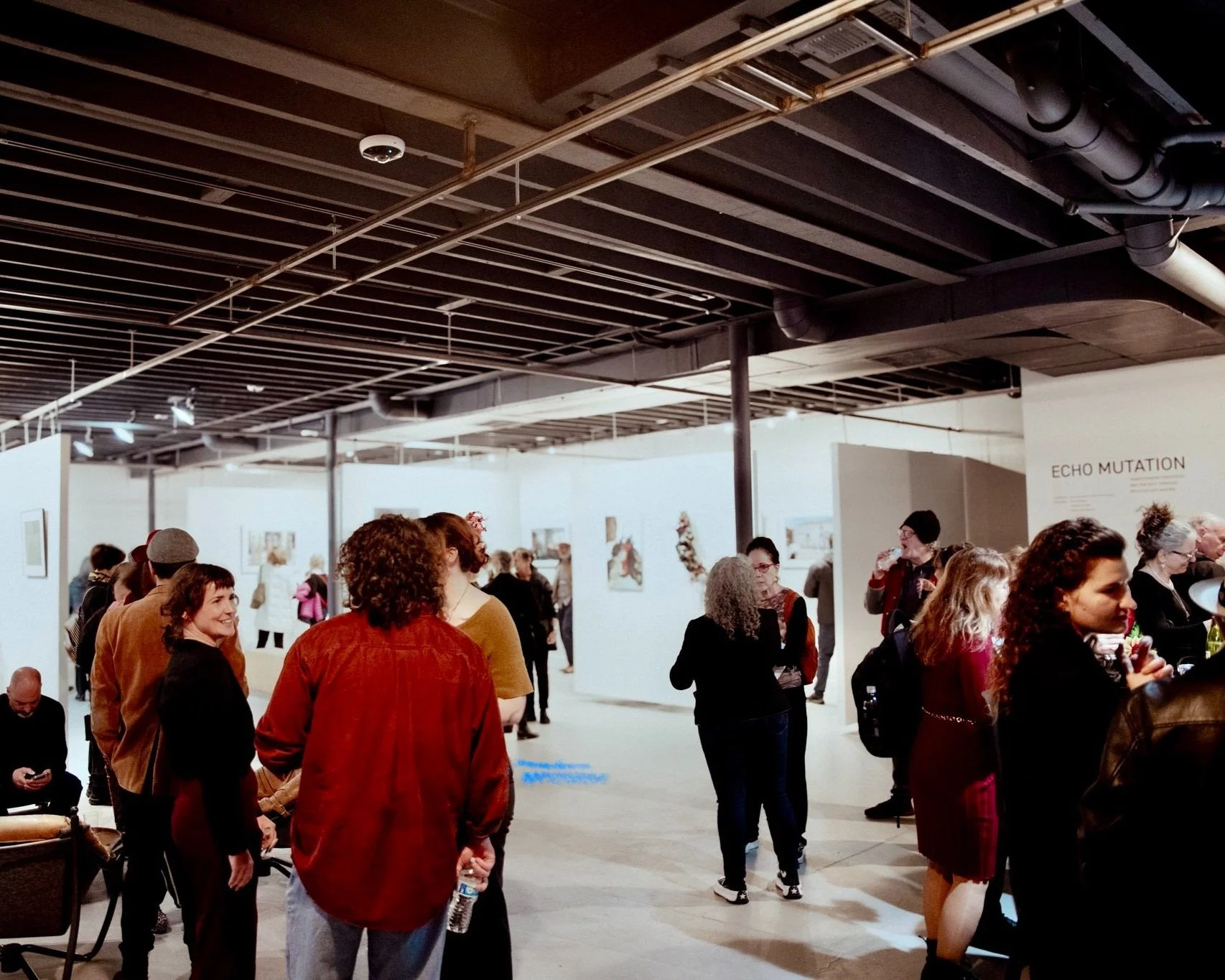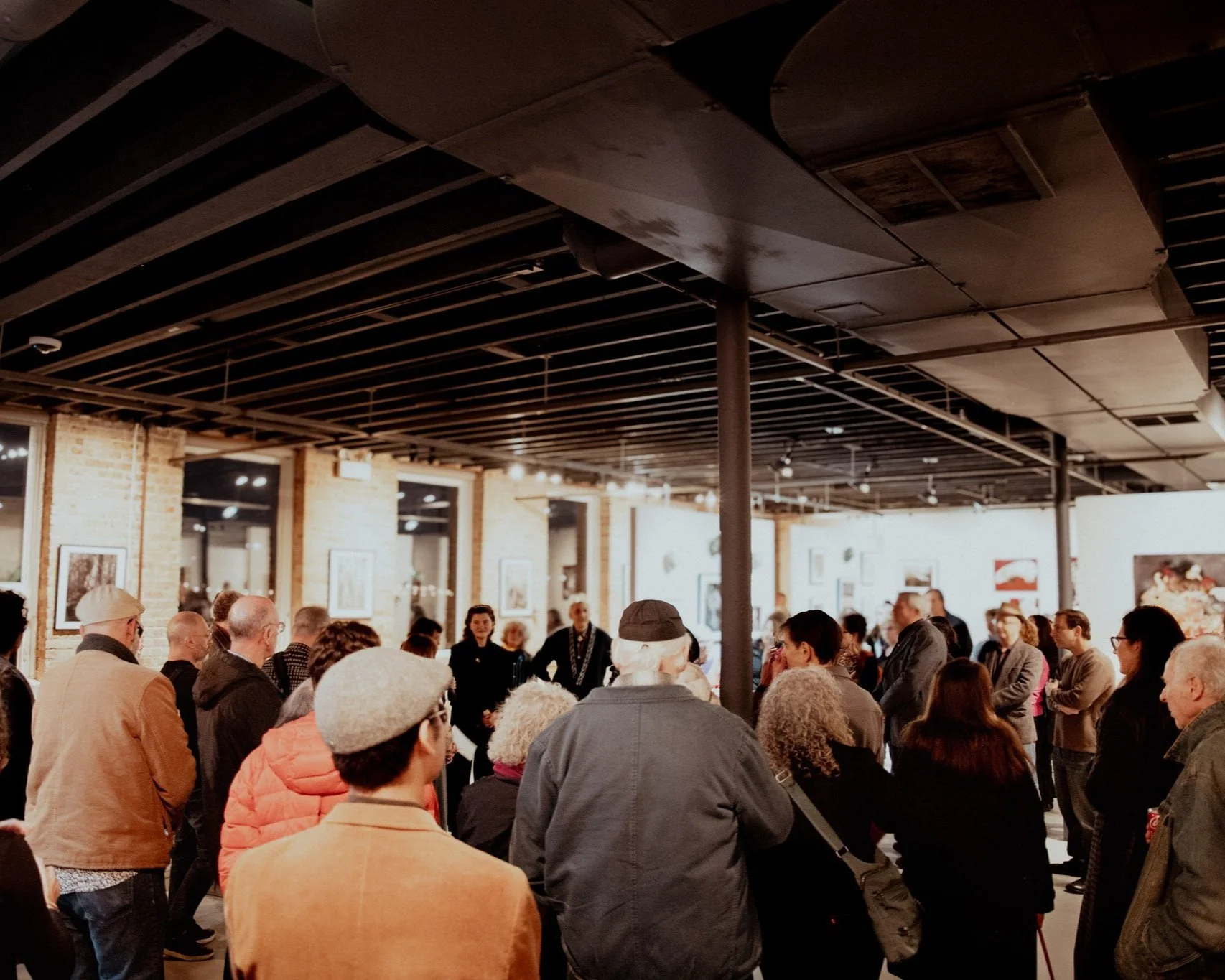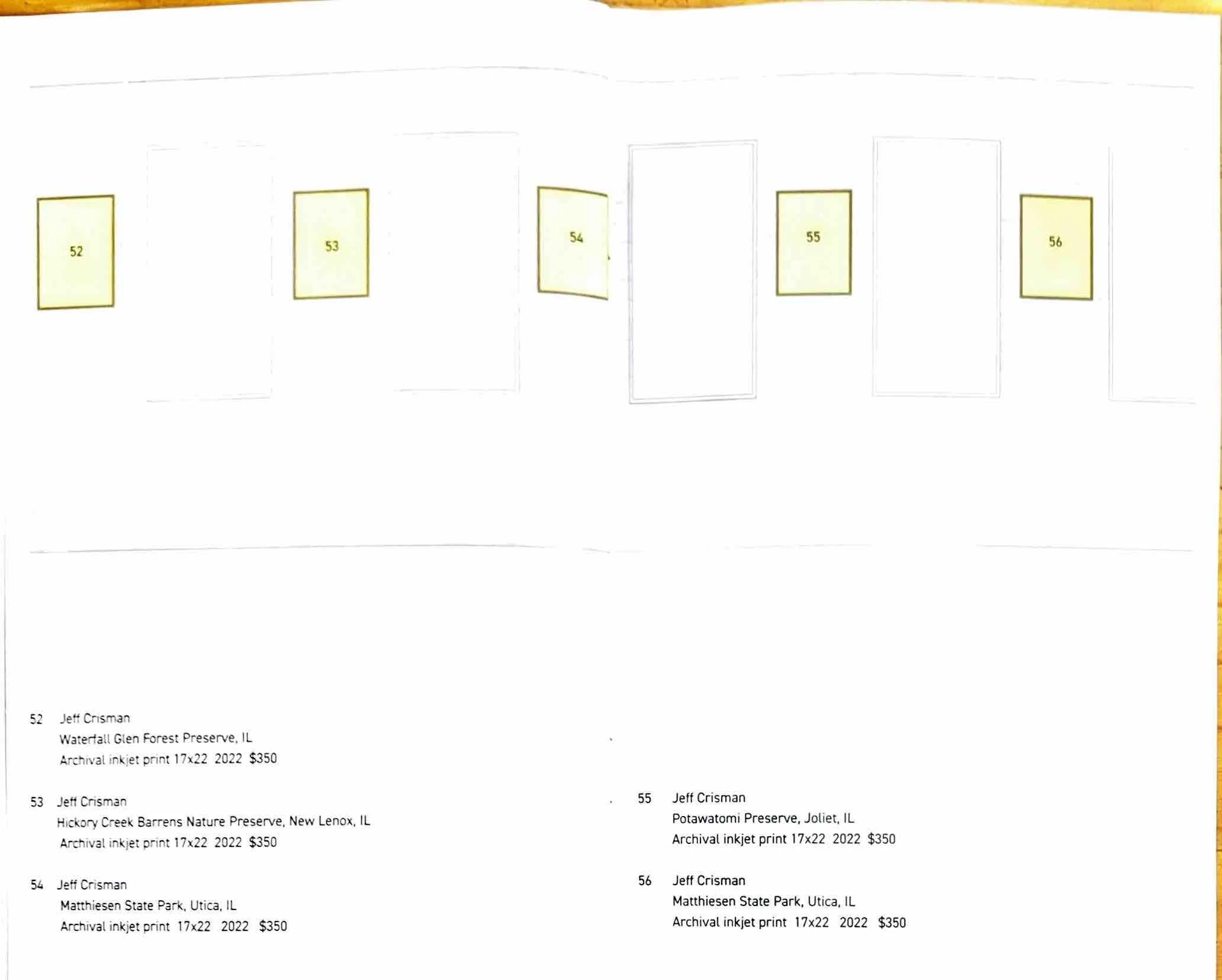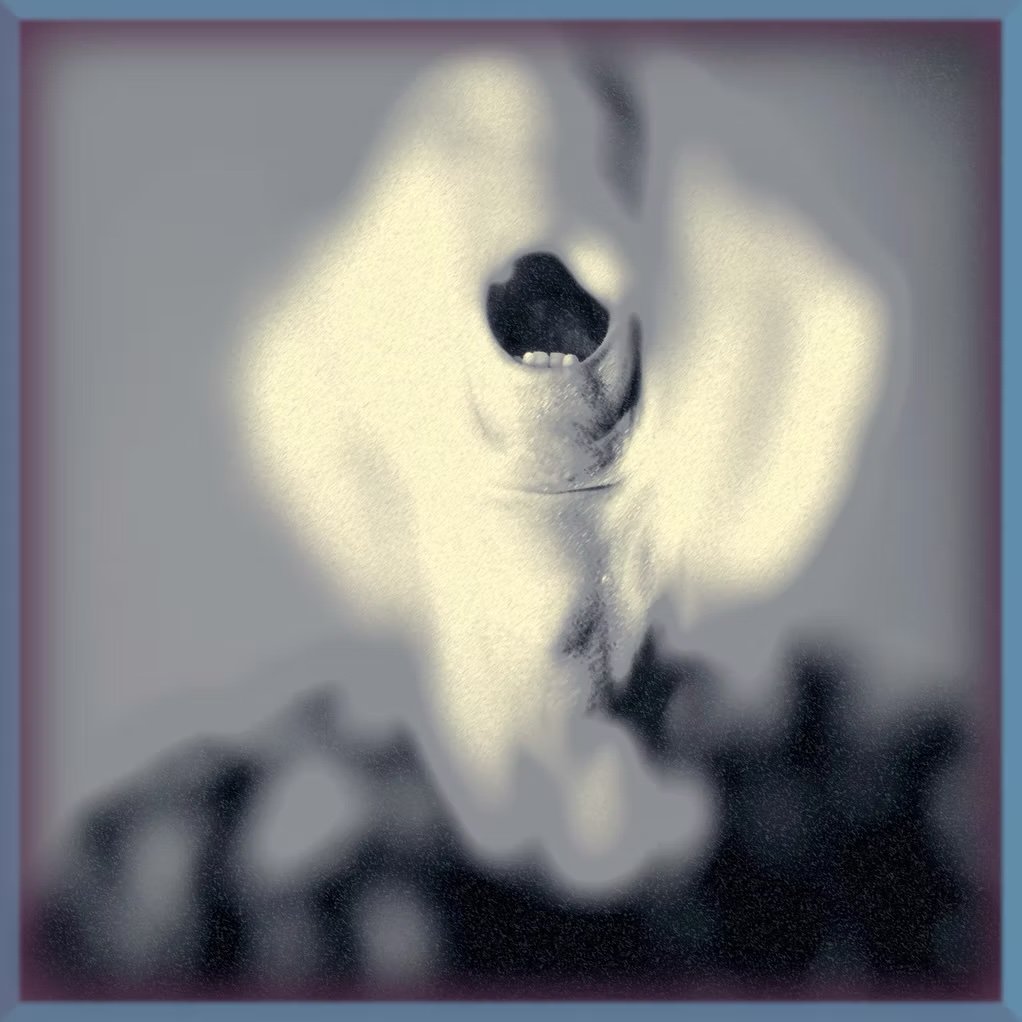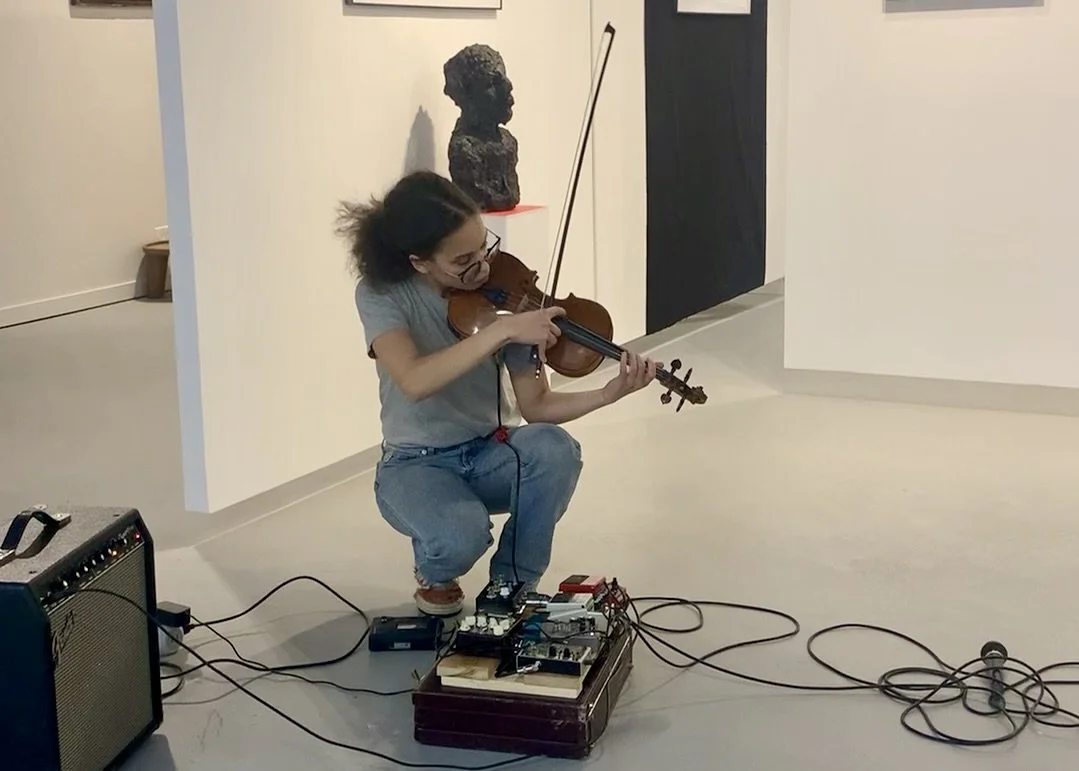Exhibtion
ECHO MUTATION
Transforming processes and the self through intuitive art-making.
Cuatorial Statement
I invite you to stop reading if you haven’t taken a moment to walk through the exhibition Echo Mutation to experience the work of Michelle Stone, Jeff Crisman, and David Haupschein. Intuitive art-making takes intuitive viewership. What do you see?
_
Our three artists here have very distinct styles and aesthetics. Yet their approach to art-making is so similar that their artworks evoke eerie visual connections. Their attention to the process is what links their work and what cultivates their friendship. They don’t know where their art is taking them, yet they know when something they’ve done feels right. It’s about submitting a bit of control and letting the work take them where they need to. In an art world polluted by branding and self-promotion, authentic art-making can become peripheral, or worse, forgotten. This exhibition doesn’t condemn having to participate in this reality. However, it is a warm reminder to stay loyal to the process as these artists have throughout their lives.
Observe how these artists uniquely transform objects and give a new perspective to pre-existing forms. Jeff Crisman re-frames the forest’s light and angles. In that process, he exposes us to a broader realm of what a tree can be. Crisman collaborates with his camera to capture the recognizable patterns our brain interprets in trees—a phenomenon known as pareidolia—leaving room for the viewer to speculate over the image they perceive. Michelle Stone transforms objects she’s collected or created through a cyclical process. For example, she might begin by staging scenes with random objects or toys and photographing them. These photographs might serve as a new canvas upon which she paints. Then, the residue acrylic plastic from her palette can become the medium of a sculpture, which later can prompt yet another painting. It’s a constant cycle of revisiting and refiguring— a play with forms and the images they can generate. David Hauptschein transforms images by following “the voice in the back of his head”. He writes AI prompts to intuitively modify digital images, using the process as a tool to explore his subconscious. We are confronted with a mind that is unafraid to face itself. The result is not only a fragment of Hauptschein’s exploration but also how an AI image generator interprets it. The work embraces the absurd to the point that the original image prompt becomes irrelevant. The images we see are not a direct reflection of Hauptschein’s imagination, rather, they represent his dialogue with the new artistic medium.
These art processes shapeshift the form and the self. They are continuous conversations between the artists and their art. What you see on the walls are snapshots of these conversations. Our three artists harbored an organic mutation of their work and themselves– it is a manner of self-reinvention. These works are self-portraits, not in appearance but in essence, capturing the artists’ shifting identities through honest self-expression.
Exhibition Guide
About the Artists
Michelle Stone is a visual artist based in Chicago. Growing up in an art commune, she was immersed in creative experiences but didn’t pursue art-making until early adulthood. Drawing became her gateway into art, and she prioritized refining her technical skills before developing her artistic language. After earning her undergraduate degree at SAIC, she gained the confidence to push beyond traditional techniques and embrace a more intuitive approach. Her work explores themes central to the human condition—life, death, love, relationships, and emotions—using art as a means of investigation. Stone’s creative process is cyclical, with one piece inspiring the next. Working across sculpture, installation, painting, and portraiture, she follows a distinct visual language unrestricted by medium. This fluidity extends to her materials; her sculptures incorporate recycled elements, acrylic paint, wood, and plaster, which compose hybrid creatures or abstract natural forms that exist individually or in dynamic groupings. Her paintings, created on paper or drafting film with acrylic and house paint, explore abstract narratives and shadowy figures, reflecting themes of transformation and decay. Across her body of work, connections emerge—similar forms appear in sculptures and painted photographs, and leftover acrylic fragments from her palette find new life in three-dimensional pieces. She views art-making as a lifelong process, with her work serving as a continuous dialogue with her craft.
Jeff Crisman is a lifelong photographer and retired educator. Growing up in Vermont in the 1960s, he was initially hooked by the modernist nature imagery of Edward Weston and Minor White, and fascinated by the chemical process of black and white photography. After moving to Chicago in the 70s, employment and graduate school at the University of Illinois shifted his focus to color and social documentary work. Crisman embraced a visual, anthropological approach, influenced by Diane Arbus, August Sander, and Walker Evans. He traveled across the US and provinces in Canada, documenting tattoo artists and extreme collectors for nearly 20 years at a time when tattooing was gaining legitimacy as an art form, yet still carried a stigma. Projects since include work with pinhole cameras exploring mythological sites in Greece, and the phenomenon of pareidolia - seeing meaningful images in random forms. He has been working on a long-term project documenting a decommissioned munitions factory and how the natural world reclaims man-made structures. During the COVID pandemic, Crisman spent time wandering and photographing in Will County’s forest preserves much as he did in his youth in New England. The new work continues his fascination with pareidolia and the spiritual, poetic, brutal beauty of the natural world. Expanding beyond photography, he is currently learning to sculpt with fallen branches that play with associations in his photographs. He humorously refers to the totality of this current multimedia work as “crypto-botanical haiku”. The ritual of revisiting the same places over time intrigues him, as he explores how perception shifts with familiarity.
David Hauptschein is an artist, playwright, screenwriter, and impresario based in Chicago. Growing up in the suburbs of Philadelphia, he was first introduced to the art world through a book about Salvador Dalí, “Even though he was a despicable human being, he was one of the things that kind of got me started. What I liked about Dalí was that he took these weird, paranoid thoughts and did things the way he wanted to in a unique manner. There was only one. There's not even anybody close to him and his personality.” Hauptschein was intrigued by figures that rejected external validation and embraced intuitive creative processes like Frank Zappa. Hauptschein’s artistic journey was shaped by early alienation from traditional theater and formal art education, leading him to photography and experimental visual storytelling. He consistently found inspiration in surrealism, exploring themes of identity, perception, and personal mythology. His work challenges viewers by creating an alternate reality, inviting them to question their own perceptions.
Haptschein uses self-expression through self-portraiture, blurring the line between fiction and reality. Despite struggling with dyslexia and feeling disconnected from conventional education, he discovered a deep passion for creativity. His career has spanned multiple disciplines, including visual art, theater, spoken word, and filmmaking, with a focus on immersive storytelling. The incorporation of artificial intelligence into his digital artwork has further expanded his exploration of surreal narratives, often reflecting his personal experiences of disorientation and fragmented understanding. Ultimately, his work serves as both a personal exploration of the subconscious and an open-ended invitation for audiences to engage with unconventional, thought-provoking worlds.
Public Engagement
Creative Movement with Hannah Marcus
Workshop
Performance
As part of the public engagement programming for Echo Mutation, this participatory workshop invited guests to explore the exhibition through the language of movement. Led by Chicago-based dance artist Hannah Marcus, participants engaged in improvisational exercises that respond directly to the artworks on view. Together, they investigated how visual qualities in the exhibition can be translated into physical expression, uncovering a movement vocabulary that balances intuition with conscious reflection.
Musical Improv with D Jean-Baptiste
In conjunction with Echo Mutation, the Chicago-based interdisciplinary artist, D Jean-Baptiste created an immersive sound performance and developed a process for interpreting visual art through sonic experimentation. Using the works in Echo Mutation as creative catalysts, they explored methods for responding to the work through experimental sounds using violin, voice and synthesizers.
Education
Our Art Talk featured the artists Michelle Stone, Jeff Crisman, and David Hauptschein, and curator Alicja Seledec, from the exhibition Echo Mutation. The session was a Q&A style open conversation hosted by Seledec, which allowed audience members to ask the artists and curator questions about the exhibtion and their work.



